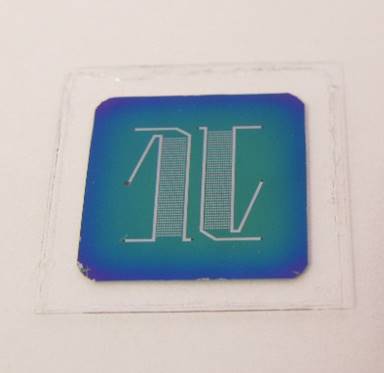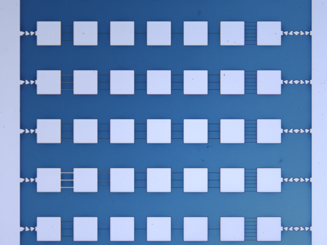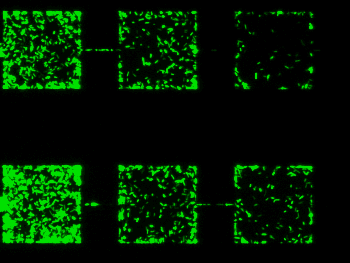Research Overview
Introduction and Goals
Bacteria are the simplest living organisms. As such they are perfect systems to understand at quantitative level how basic cellular processes unfold. Much progress in the past years has been made in understanding atomic level structure of molecular building blocks of cells. These molecules include DNA, RNA, proteins, lipids, sugars etc. What is much less understood is how these basic building blocks of life spontaneously self-assemble to a structures that make up the cell. These processes span over different spatial (from nanometer to micrometer) and temporal scales (from microsecond to hour). To unravel these processes concepts and methods from biology need to be combined with those from physics and chemistry. In the latter front some ideas from polymer physics, statistical and continuum mechanics can be borrowed but cellular processes are inherently in non-equilibrium and describing these processes may also require distinctly new concepts.
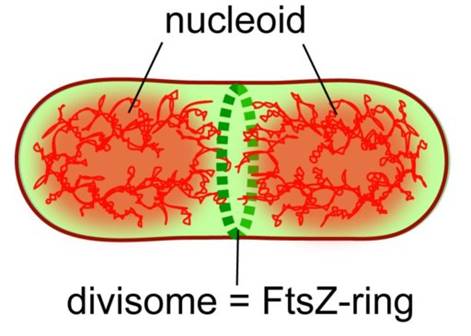
The goal of our research is to understand how chromosomal DNA and cell division apparatus self-organize in bacterial cells and how cell division and replication processes are coordinated in the cell cycle.
Chromosome and the cell division apparatus (the divisome) together with cell envelopes form a key macromolecular building blocks of a bacterial cell. Understanding how these building blocks are organized is a fundamantal question of bacterial cell biology and biophysics. This understanding is relevant in finding new targets for anti-microbial therapies.
Methods
Our research combines high resolution optical microscopy, quantitative image analysis, molecular biology techniques, microchip engineering and numerical modelling.
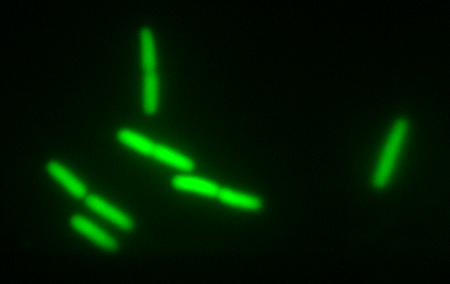
Regular rod-shaped E. coli expressing cytosolic GFP |
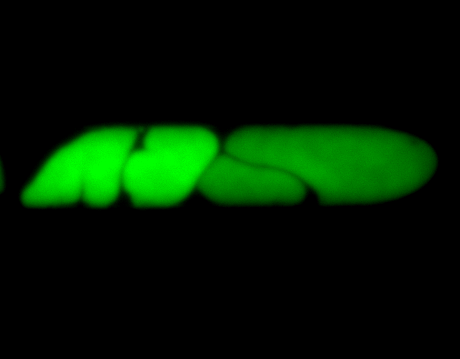
Irregularly shaped E. coli growing in nanofabriacted channels of 250 nm height |
We study Escherichia coli as a model organism. We are interested in regular rod-shaped E. coli (above left) but also in cells which shapes are strongly perturbed (above right). To grow these very irregular shaped cells we place E. coli into nanofabriacted channels. The width of the channels is narrower than the bacterial diameter and therefore deform the bacteria. The deformation and associated strain lead to gradual rearrangements in bacterial cell wall growth patterns by yet to be identified mechanism.
A silicon based microfluidic chip |
Zoom-in of the chip |
Fluorescently labelled E. coli in the chambers of this chip |
To model cellular processes we use Molecular Dynamics and Monte Carlo simulations. Our interest is to build a system level understanding of bacterial DNA organization (bottom left) and self-assembly process of cell division proteins (bottom right).
Alignment of replication terminus region of a partially replicated chromosome with the cell center as a result of Brownian motion. The resulting state is maximal entropy macrostate of partially replicated DNA |
|
